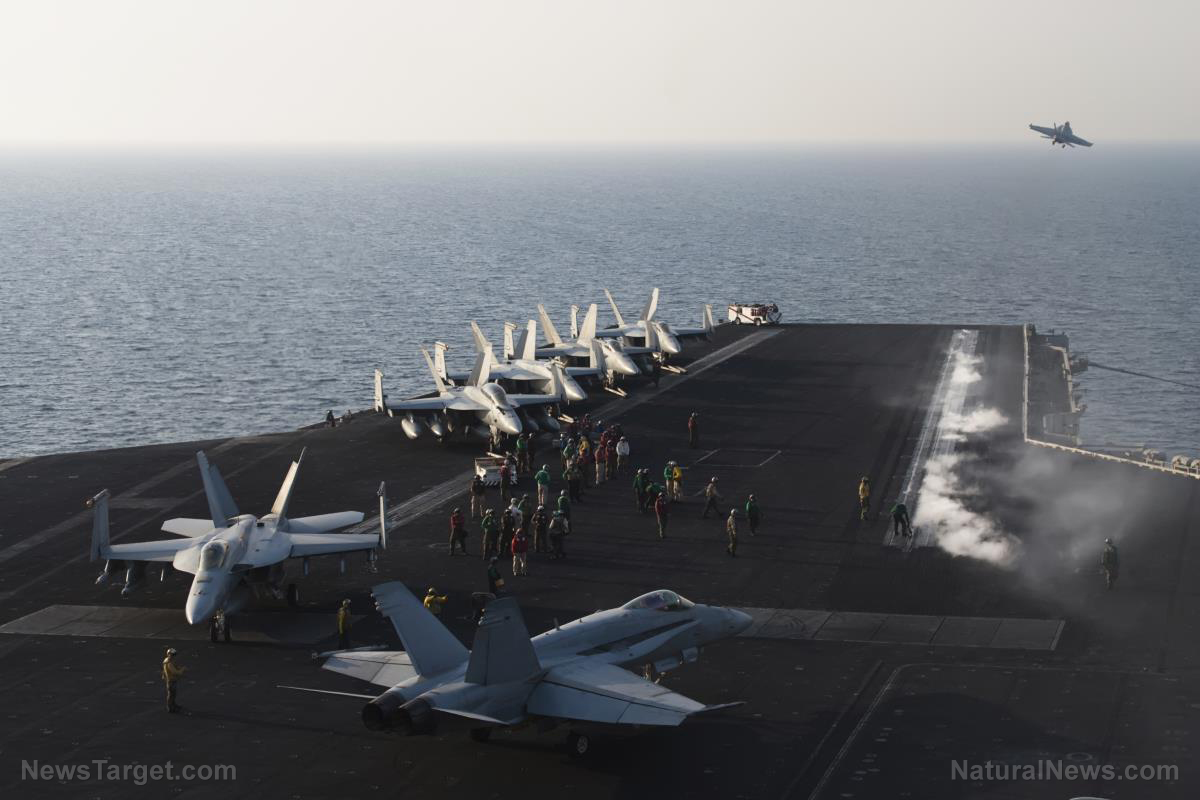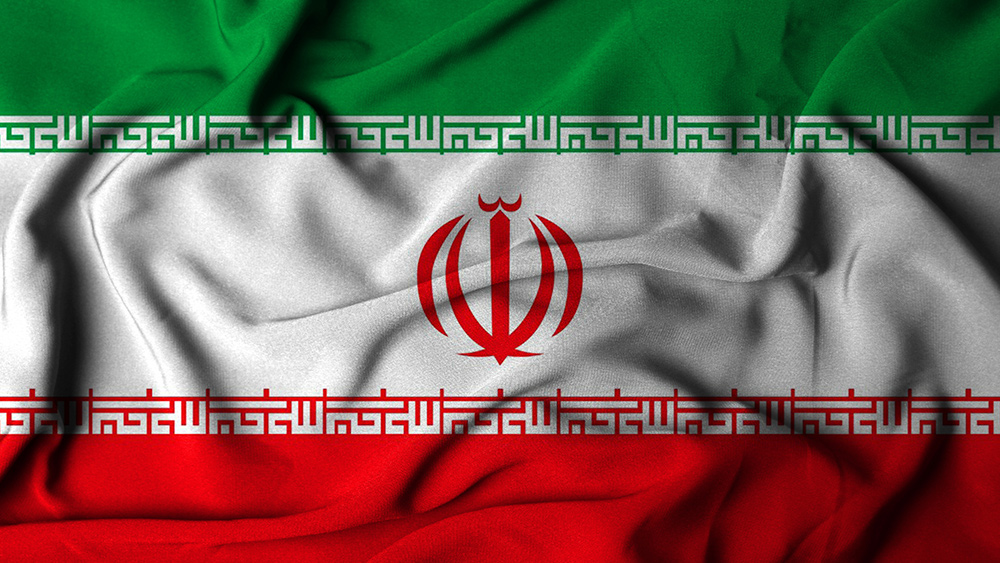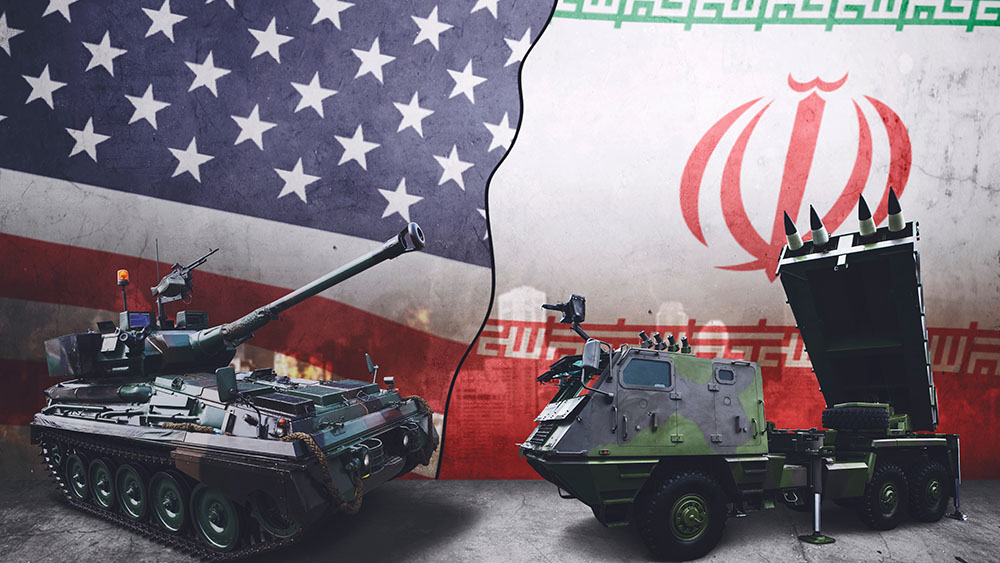 Parler
Parler Gab
Gab
- Conspiracy theorists warn the USS Nimitz could be sunk in a false flag attack to escalate US-Iran conflict.
- Historical parallels include 1967’s USS Liberty incident and the Gulf of Tonkin controversy.
- Strait of Hormuz closures could trigger a global economic collapse and catastrophic military escalation.
- Experts dismiss claims as speculative, emphasizing U.S. military prudence and misinformation risks.
- Debate underscores geopolitical stakes and dangers of unfounded "what if" scenarios in social media era.
When collisions met conspiracies
The USS Liberty’s ordeal in 1967 remains a touchstone for modern conspiracy theories. Then monitoring Middle East tensions, the U.S. intelligence ship was mistakenly identified and attacked by Israeli forces during the Six-Day War. Israel’s explanation — that it mistook the vessel for an Egyptian ship — is disputed, with theories suggesting the U.S. government colluded to divert attention from escalating Arab-Israeli hostilities. President Lyndon B. Johnson allegedly buried the truth under pressure from pro-Israel lobbies, a narrative that resonates with today’s skepticism. A decade later, the Gulf of Tonkin incident framed another chapter. In 1964, U.S. destroyers stationed near North Vietnam reportedly came under attack, but evidence later revealed the U.S. had provoked engagement through CIA-led sabotage. Congress authorized military escalation in Vietnam via the Tonkin Gulf Resolution — a decision historians argue shaped the war’s trajectory. Both events underscore how naval disputes can become lightning rods for mistrust and geopolitical manipulation.The current crisis: Oil, waterways and the menace of mobile missiles
Strait of Hormuz chokehold hinges on 21 million barrels of oil daily, or 20% of global supply. Iran’s repeated threats to block the strait amid U.S. sanctions and broader tensions with Israel have raised alarms. Analysts warn closure could spike oil prices, destabilize economies and force U.S. intervention — a scenario fraught with peril. Iran’s asymmetric warfare capabilities complicate such a mission. Truck-mounted anti-ship missiles cached across deserts and mountain hideouts pose a “couldn’t-miss” threat to even advanced U.S. naval systems. The 1987 USS Stark’s accidental hit by an Iraqi Exocet missile — a precursor to today’s weaponized drones and missiles — offers grim reminders. For ground forces, recapturing territory the size of Iran dwarfs even Okinawa’s 1945 campaign, which took 80,000 U.S. casualties. Modern U.S. troop levels and logistical gaps suggest such a maneuver is impractical — and invites greater losses.Debunking the “false flag” fever
While theorists speculate on moles within intelligence agencies or a neoconservative plot recalling the 2003 Iraq invasion, mainstream analysts emphasize context. “The idea U.S. leaders would sacrifice USS Nimitz for leverage makes no practical sense,” argues Rear Admiral James E. Stavridis (Ret.), former NATO Supreme Allied Commander. “The carrier’s value in deterrence far exceeds any political gambit. Destroying it would be a victory worth more to the enemy than even the Wolfowitz Doctrine could justify.” Digital misinformation experts concur. “False flag talk thrives on fear and isolation,” says NYU’s Angeli Gianchandani. “Social platforms reward outrage, not rigor — so theories claiming ties between Mossad, the CIA and this deployment spread like wildfires. Yet zero credible evidence sustains them.” Historical analogies cited by theorists — such as “Project Cyanide” linking USS Liberty to a CIA-Mossad op — rely on declassified intelligence leaks, with few confirming primary sources. Meanwhile, Iran has openly discussed Hormuz blockades, arguing they’re defensive measures against sanctions, not pretexts for-proxy warfare. Sources for this article include: Substack.com TheBurningPlatform.com NationalInterest.orgAI training’s “fair use” wins over books, but court leaves piracy bill on tech’s table
By Willow Tohi // Share
False flag plot: Exclusive report reveals Israeli scheme to frame Iran for U.S. attack
By Willow Tohi // Share
Governments continue to obscure COVID-19 vaccine data amid rising concerns over excess deaths
By patricklewis // Share
Tech giant Microsoft backs EXTINCTION with its support of carbon capture programs
By ramontomeydw // Share
Germany to resume arms exports to Israel despite repeated ceasefire violations
By isabelle // Share










